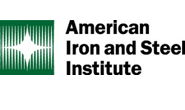Market Data

May 16, 2023
AISI Leaders Discuss State of Steel at Annual Meeting
Lourenco Goncalves, Cleveland-Cliffs’ chairman, president, and CEO—as well as the newly elected AISI chairman—and Kevin Dempsey, AISI president and CEO, discussed issues ranging from Section 232 tariffs and hydrogen in steelmaking, to steel imports from Mexico, along with a host of other topics on Tuesday at the American Iron and Steel Institute (AISI) General Meeting press briefing in Washington.
![]() First, Goncalves was quick to point out that the US is the “most exciting market” for steel globally, touting it as the cleanest in the world.
First, Goncalves was quick to point out that the US is the “most exciting market” for steel globally, touting it as the cleanest in the world.
Two of the most important factors he cited were incentives from the federal government and reshoring.
“We are waking up and bringing back manufacturing to this country,” he said.
Section 232 Tariffs
On the 25% Section 232 tariffs instituted in 2017, Goncalves emphasized again that their underlying reason is national security, not protectionism.
“We can’t rely on countries that are at war, or will soon be at war,” he said.
He pointed to the situation with metallics where the US was heavily dependent on Russian and Ukrainian products.
“Now Ukraine is being destroyed and we can’t deal with Russia because it’s not moral,” Goncalves said.
He cited Cliffs’ production of electrical steels as a positive result of the tariffs, noting how the Cleveland-based steelmaker has ramped up production as imports have become less attractive.
Dempsey explained that a “surge of imports” could create overcapacity that hurts domestic industry, and thus national security.
“In a perfect world we wouldn’t need it,” Goncalves said. “But this is the real world.”
Dempsey noted that if no wider global deal, or a deal with the EU, is reached, the tariffs currently in place are set to renew on midnight of Dec. 31.
Hydrogen
Earlier this month, Cliffs successfully completed a hydrogen (H2) injection trial at its Middletown Works blast furnace in Ohio.
As mainly an integrated steel producer (with five EAFs), Goncalves underlined how important hydrogen is for the steelmaker’s future. He described hydrogen as “the next frontier,” adding: “We are making hydrogen viable.”
“It’s a lot closer than people believe,” he said, noting that although there is not yet a hard deadline, a large impact could be felt by the end of this decade, mostly in the Midwest where Cliffs is already producing hydogen.
This work will also be important globally. Goncalves pointed out that other regions, especially the EU and Asia, rely primarily on blast furnaces, not EAFs, for steelmaking. Also, even advanced countries like Japan are still making BFs.
“Why do they still have blast furnaces?” he asked. As an example of the viability of BFs, he looked to the automotive industry, where exposed parts require BFs to fabricate them.
Steel Imports from Mexico
A hot-button issue here in North America, members of the Congressional Steel Caucus last week urged action on what they deemed a “surge” of Mexican imports. They claimed the imports are in violation of the US and Mexican 2019 Joint Statement on Section 232 Duties on Steel and Aluminum, according to a letter addressed to Commerce Secretary Gina Raimondo and US Trade Representative Katherine Tai.
The US removed Section 232 duties on steel imports from Mexico in May 2019, ahead of the US-Mexico-Canada Agreement (USMCA) going into effect in 2020.
Goncalves, agreeing with the Caucus letter, said Mexico is taking advantage of its privileged position within that agreement. “It would be a lot easier to take the ‘M’ out of the USMCA than you would believe,” he said.
By Ethan Bernard, ethan@steelmarketupdate.com






